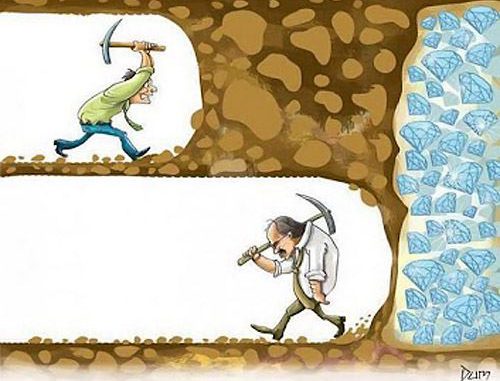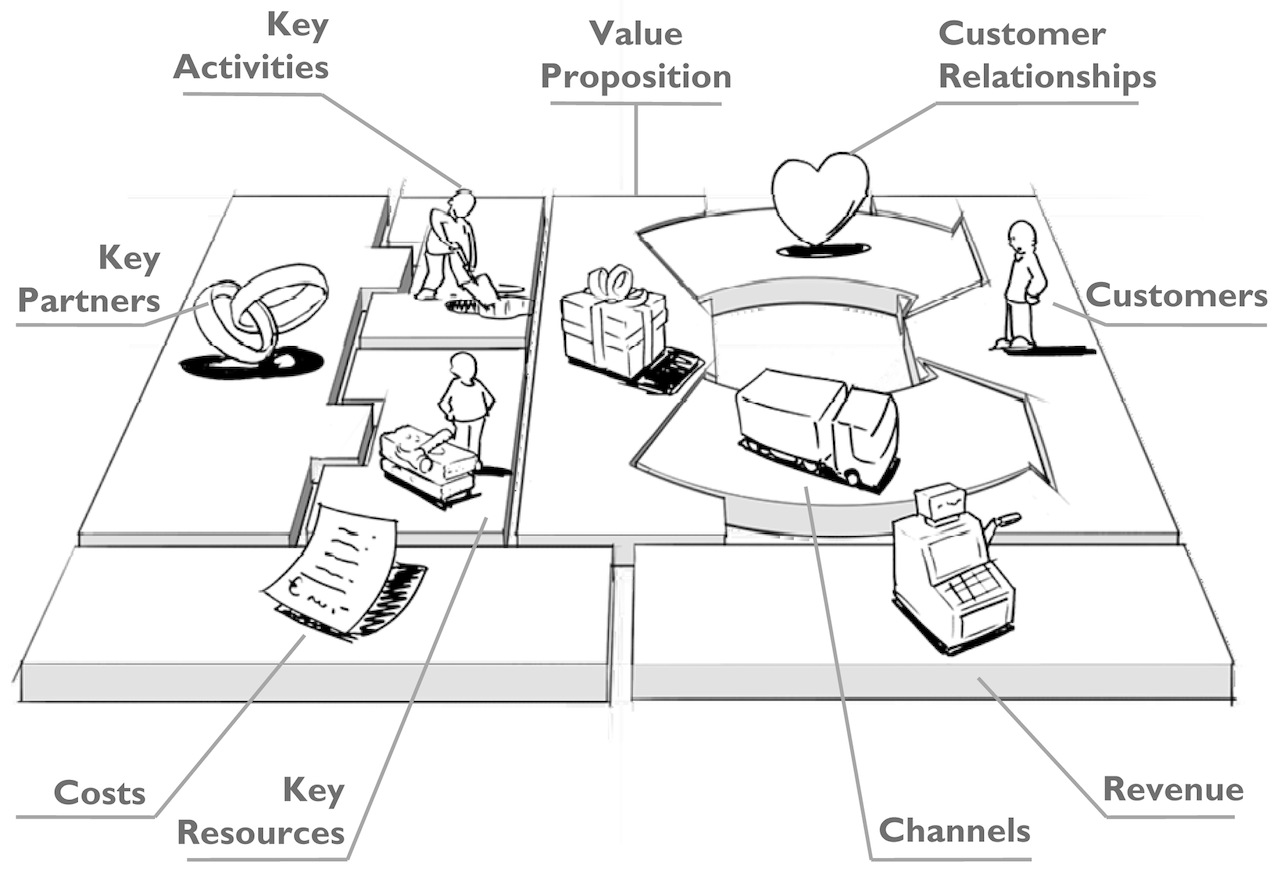
QUESTION: how to develop a successful eCommerce website?
In this post, I would like to face this debated issue. Too much people get rid of this subject with “ready-to-go solutions” which reminds more of a magical world than to the economy. To start an eCommerce is something pretty complicated.
To answer the initial question, I will face 3 main subjects sorted by priority. They correspond to key factors to succeed - according to my experience - in an eCommerce project:
- organizational culture
- business plan
- web marketing
Organizational culture
This subject is at the top of my chart. According to my experience, indeed, it represents the hardest tangle for every “traditional” company which decides to approach online selling. To explain why, first of all, it is better to answer the question: what is the organizational culture? To quote Wikipedia: the organizational culture must be understood as an emergent property of the implicit and explicit organizational design principles and encompasses values and behaviours that "contribute to the unique social and psychological environment of an organization”
If, in this definition, it is not tough to understand what is meant for “behaviours” or “environment”, I will focus on the word “values”. A value can be considered as such if it guides us in a decision rather than another.
Here you have an example.
You are driving through the desert.
The traffic light you find on your way is red. Despite that, you decide to go: nobody is there, nobody is watching you. What do you think once you went through? If you feel a small, even imperceptible, feeling of disease it means that you give value to that rule (do not cross the road with red traffic light).
The eCommerce companies nowadays share a set of values that are different from the values of a traditional business company.
See the comparison in this table below. Please, look at this with a certain degree of objectivity as there are “mixed” realities (maybe yours) that are difficult to classify in a column rather than the other one.
What follows is an example of the real situation.
|
traditional business company |
online business company |
|
Decorates the shop window |
Gives attention to the product sheets |
|
Not necessarily knows Photoshop |
Probably knows Photoshop |
|
Employs good-looking staff |
Employs staff with PC knowledge |
|
Few email contact with clients |
massive communication flow with emails |
|
Ecc. |
Ecc. |
It is for this reason, for the organizational culture and for the difficulty faced to “model” it, that many companies stop. In particular, those who already have a traditional business. These are realities that have already “installed” these procedures in their behaviour and that are asked to change radically.
The fact that the change is tough to practice and that it needs time is evident. A rapid cultural change can cause traumas.
These are as big as the complexity of the organisation (in this situation, it is easy to have polarized “center of power”: do you remember the Uber issue in Italy).
According to my experience, indeed, the businessmen which succeed in online commerce are those who:
- are not stopped by the change. Instead, they are challenged by it.
- understand the complexity, at first organizational, that a business company provides
- empower but not too much, because they want to understand the organizational processes to optimize it
As a matter of fact, an eCommerce business has to be interpreted as a new business initiative, even if in an entrepreneurial entity which already exists.
Business model
If it’s true that an eCommerce business corresponds to a new business plan to launch, the business model cannot be the same for every company. To understand deeply what it is meant for the business model, I suggest you read the volume "Business Model Canvas". This book - in addition to describe the common models - offers a clear and simple schemed representation: you find that below.

If you follow the scheme, you can see that a Business model is made of:
- Value proposition.
- The value proposition is the answer to this question: why the client should pay for my product/ service? Take under consideration that the answer could be divided into different elements and could take different roads. If you think of this aspect, probably you’ll find curious that many businessmen are not questioning about this - even before they started their business (in fact the number of unsuccessful companies is higher than the number of companies that succeed in being on the market)
- Clients: remember that the value proposition could be different according to the "segment" of clients. I was born in 1976 and the people of my age find Amazon easy for payments (and for many other reasons). On the other hand, the people of my father’s age (who was born in 1943) can choose Amazon for its strong brand and the reliability it has (also thanks to the advertisements on the tv).
- Relationship with clients: no more explanations are needed (moreover in this post)
- Incomes and Costs: there are the takings and the expenses. The profits are the difference between these two factors (if the Incomes are lower than the Costs, we are making a loss) [disclaimer for those who perfectly knows the accountancy: that’s incredible, but it is not so common to know accountancy like you and me :)]
- Distribution: it represents the channel you use to deliver your products. In case of an eCommerce website, the website is the channel itself. There exists eCommerce which are integrated with a traditional distribution network. For example, think of the website of a supermarket.
- Key resources: all the suppliers you need in order to offer your service/product to your clients. Also, the offices you rent represent a resource (maybe it is not a “key” resource, but think about a shop in Via Montenapoleone: in this case, the place plays a key role).
- Key partner and key activity: no further explanation is needed.
If you were to analyze the successful eCommerce websites (eBay, Amazon, ePrice, Dalani), you will see that each of them has a strong and clear business model. Because, at the end, this is what makes a company a winning business.
There are business models, for example, launched years ago and developed rapidly. A clear example is the DropShipping which consists in a “triangulation”: the customer buys from an online seller which orders the items - once received the money - from a supplier. This supplier directly delivers the items to the final customer. This model, to be bearable, must provide a differentiation compared to the other competitors. Vice Versa, the value proposition could be weak. It must be said that in some item categories, for example electronics where the products become old in a small time and the prices are high, the dropshipping is likely to be spread for obvious reasons.
The advice I want to give you is to think about your eCommerce plan and have clear in mind your Business Model. A company launched without a clear business model is likely to fail. “When a man does not know what harbour he is making for, no wind is the right wind” by quoting Seneca.
Web Marketing
Before we talk about web marketing, it is worth mentioning what is marketing. The marketing is composed of the activities used to commercialize a given product (there are also more academic definitions, but this is not the place to cite them).
When you hear talking about web marketing, indeed, you should know that this term is referred to those activities useful to acquire new clients through web-based initiatives. Among the most important components, there is surely the data monitoring. This is the weakest part, according to my experience, for many companies which deal with online commerce for the first time.
An analytic approach useful to take decisions is, indeed, rare among the Italian companies. Most of the times, the Italian businessman takes decision according to his/her taste - and this is not always the right way. With the web era, it is easy to collect a big number of “free” data and it is easier to have objective elements in order to make choices with rationality.
The activities you can use in marketing settings are various: some of them are popular (SEO, SEM, comparison shopping websites etc.) and others are more sophisticated (Artificial Intelligence, Machine Learning, etc.). When you launch your online commerce, remember that there is no “University of web marketing" because, if it were to exist, it will be really tough to keep updated.
Keep in mind the aim of your marketing action and - regardless you are doing it online or not - what expectations you can have.
Always according to my experience, the businessman which succeeds in eCommerce is the one that - personally - gets his/her hand dirty with web marketing. This is because if s/he knows the basis, s/he can choose a trustworthy agency or consultant.
The trust-subject is fundamental. To find a way out the woods you need to trust your guide.
Myth to dispel and conclusions
I know what you are thinking about in this moment, moreover if you disagree with what I said in this post. However, if I guessed what you are thinking about, you should know that you are not alone. It happens so frequently to have prejudices in this field that I collected a list of myth to dispel about online commerce. I am making a bulleted list, make good use of it:
- "My item category is different ".
- This is not true. Each item category has peculiarities and criticalities linked to the remote retail sale (not only to online commerce). The difficulty here stands in launching a new flow of incomes: to sell it is never easy. For some item category it is true that there is a wider market, but wider market also means more competitors.
- "My clients are odd".
- This is not true. Your clients are clients. Stop. As they are human beings, they behave according to given mechanisms (the branch of economics which studies their behaviour is the Behavioral Economics). The difficulty stands in the fact that the human beings are complex: to sell it is never easy.
- "The winner is always the price"
- It is not true. It is true that the price has an important role in the client’s choice. Each client (also you when you have to buy something) makes an analysis of costs and benefits of the transaction. As for the price examination, nowadays it is easy to see thousands of offers online. Before the online shopping, the activity of comparison (in technical words this is called benchmark) was more complicated.
In conclusion. An ecommerce activity is made of business initiatives for all practical purposes. The ecommerce is a distribution channel, but if there is no solid model, it is really difficult for the companies to stay on the market.
Among the many directions a company can invest, that of web marketing is the choice which “awards” the commercial part. There exists always the question mark about the choice of a reliable consultant company. A businessman which is new in this field can tackle some difficulties before trusting a company.
This is my point of view, also as the outcome of my experience on the field, but please share with me what is your point of view even if you totally disagree with me :)

